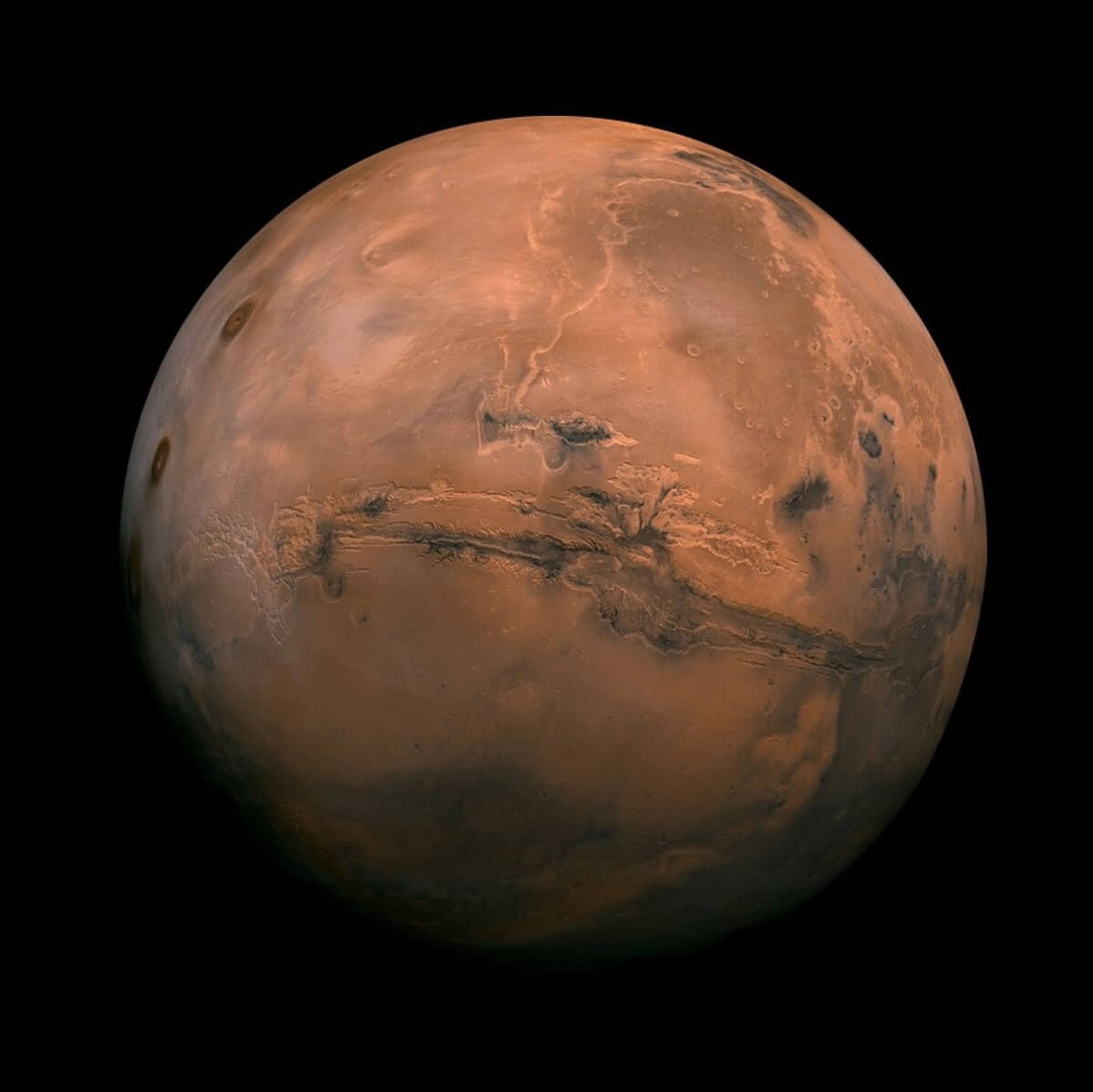Northern Summer on Mars
This mosaic comprises about 50 red-, green-, and violet-filter Viking Orbiter images, mosaiced in an orthographic projection at a scale of 1 km/pixel. The images were acquired in 1980 during late northern summer on Mars. Image Credits: NASA/JPL/USGS
Clear day on rock covered Mars
On a clear day on Mars, you can see tens of thousands of rocks. Two high-resolution scans by one of Viking 2's cameras were mosaiced to create this scene looking northeast to the horizon some three kilometers (two miles) away. Image Credit: NASA/JPL
Pathfinder's Ares Vallis landing site
A panoramic view of Pathfinder's Ares Vallis landing site, featured on the cover of the Dec. 5 issue of Science, reveals traces of this warmer, wetter past, showing a floodplain covered with a variety of rock types, boulders, rounded and semi-rounded cobbles and pebbles. These rocks and pebbles are thought to have been swept down and deposited by floods which occurred early in Mars' evolution in the Ares and Tiu regions near the Pathfinder landing site. Image Credit: NASA/JPL
